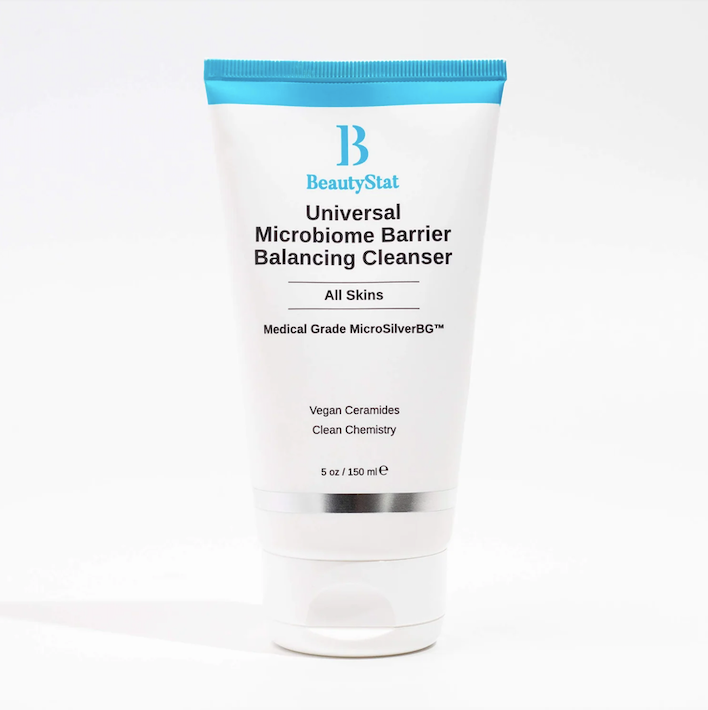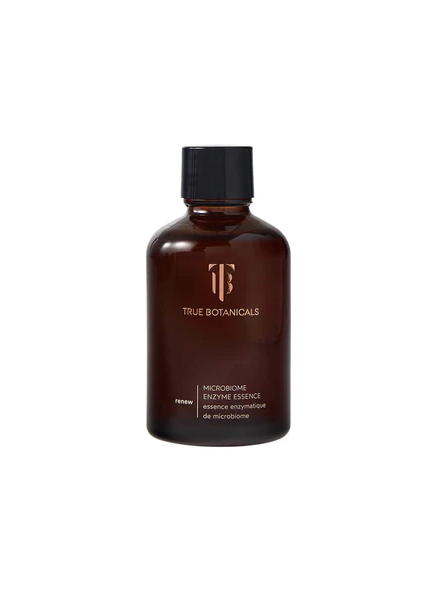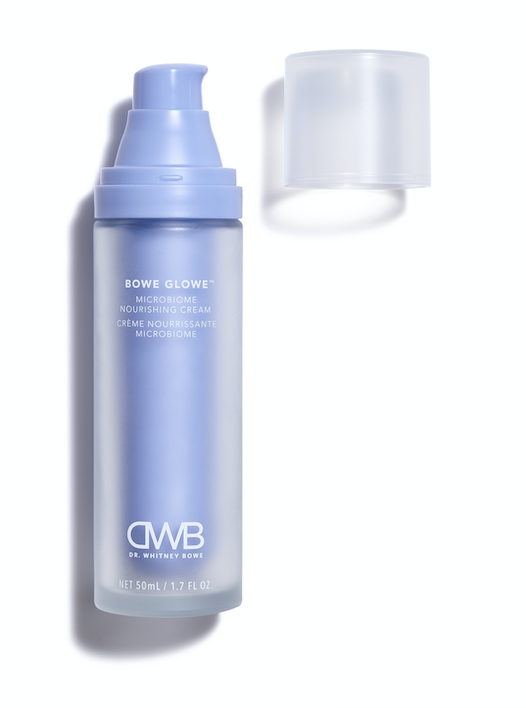As a beauty editor, I’m no stranger to skincare tech, but nothing is more eye opening than a Visia machine. The premise is simple: It scans your face to capture a picture of your skin and then calculates your skin’s pigmentation level, texture and pore size. Machines like this are jaw-droppingly expensive, so when given the opportunity to use one, I take it.
I thought that maybe it would show a little dryness thanks to the weather or some sun damage left over from summer (though that’s mostly my natural freckles) but what I discovered about my skin surprised me: My bacteria level was higher than average.
AdvertisementADVERTISEMENT
There could be a handful of reasons for this, but then I remembered the moisturizer sitting on my dresser with “microbiome nourishing” on the label and I thought, could microbiome skincare be making my skin worse?
Back at home, I immediately switched moisturizers. (I realize it’s a privilege to work in an industry where I’m lucky enough to have face cream on deck in times like these.) Though I’d been using the moisturizer regularly, I was curious to know more about microbiome skincare.
What is the skin microbiome?
Let’s start with the skin microbiome — what even is it? “The skin’s microbiome refers to the diverse array of microorganisms that live on the skin’s surface,” explains dermatologist Lauren Penzi, MD. “These [microorganisms] include bacteria, fungi, viruses, and other microbes.” Like the elusive skin barrier — the outermost layer of the skin that keeps the good things in (like moisture) and the bad things out (like pollution and irritants) — the skin microbiome is hard to grasp because we can’t see it functioning or count the ratio of “good” to “bad” bacteria (that would be cool, though). An imbalance in the skin microbiome can negatively impact your skin’s barrier function, leading to visible skin conditions like acne and rosacea, explains dermatologist Brendan Camp, MD. “Signs of skin irritation like redness, dryness, and itching could point to a disruption in the skin microbiome,” says Dr. Camp.
What is “microbiome-friendly” or “microbiome-safe” skincare?
A few years ago, microbiome skincare promised to take the beauty industry by storm. In 2022, Glossy reported that Unilever (the parent company to global brands such as Dove and Vaseline, and a big player in the beauty industry) was betting on the microbiome as the “next big trend in skincare.” I don’t think it quite took off, though. Maybe it’s a little too complicated, or perhaps it feels gimmicky — microbiome skincare is not regulated by the US Food and Drug Administration (FDA). Essentially, this label means next to nothing.
AdvertisementADVERTISEMENT
The main thing I wanted to know is whether microbiome skincare adds bacteria to the skin. The expert consensus? Not exactly. “It doesn't necessarily increase the overall bacteria levels on the skin,” explains Dr. Penzi, “but it does aim to increase the ratio of good bacteria to bad bacteria.” The goal of these skincare products is to prevent an imbalance of the microbiome, or to rebalance a microbiome that has been thrown off kilter thanks to something internal, like a course of antibiotics or harsh, topical acne treatments. “The best case scenario is that use of these products actually improves the diversity and balance of microbes on the skin,” explains dermatologist, research scientist, and skincare founder Whitney Bowe, MD.
What are the risks of having increased bacteria on the skin?
According to dermatologist Purvisha Patel, MD, the potential side effects of having too much bacteria on the skin are predominantly breakouts and acne. At the time of my skin scan, I was experiencing pretty severe breakouts (at least for me — I’m not super acne-prone). While acne is multifactorial (anything from fluctuating hormones and stress to using the wrong makeup for your skin type may contribute), I had an inkling that my breakouts were linked to the microbiome skincare I had been using for a while. Confirming my suspicions, Dr. Camp adds that increased bacteria on the skin may put it in a “pro-inflammatory state,” which could lead to experiences of acne.
Where the body is concerned, too much bacteria can lead to bacterial skin infections, as well as folliculitis (inflammation of the hair follicle) and body odor, adds Dr. Penzi.
AdvertisementADVERTISEMENT
Who is microbiome skincare for?
There is certainly a place in the world for microbiome skincare. In fact, using microbiome-focused skincare products is considered safe for most individuals, even if they don’t have specific skin concerns related to the microbiome, says Dr. Penzi. If the skin is out of balance — for example, if the barrier has been stripped from an overuse of exfoliating acids, or if you’re experiencing dryness following a course of antibiotics — microbiome-focused skincare can help to rebalance it. “Some probiotic strains (streptococcus thermophilus) can help promote ceramide production, which is a naturally occurring fat molecule that helps to strengthen the skin barrier and help with moisturizing the skin,” explains dermatologist Marisa Garshick, MD.
That said, it may be helpful to see a doctor or skin expert to determine whether prebiotic topical skincare should be part of your skin’s treatment plan.
Is microbiome skincare a scam?
Checking through the reviews of various microbiome-friendly cleansers (like BeautyStat Microbiome Barrier Repair Purifying Cleanser), toners (like True Botanicals Microbiome Enzyme Essence), and moisturizers (like Dr. Bowe’s own Bowe Glow Microbiome Nourishing Cream) proves that the skincare movement has lots of happy and loyal fans. But some dermatologists consider it to be a fad, mostly because it’s an unregulated market.
“At this time, it is important to still be wary of microbiome marketing in skincare, because, as is the case with many marketing terms, there aren’t a lot of formal guidelines, regulations or definitions,” explains Dr. Garshick. “That said, it is good that companies are highlighting the importance of the microbiome in skincare, as caring for it is an important part of caring for the skin barrier.” However, you probably don’t need it. “It’s definitely a trend and a catch phrase right now,” offers Dr. Patel.
AdvertisementADVERTISEMENT
Though some experts are wary, others believe that microbiome-focused skincare is the way forward. Dr. Bowe is one of them. “Ever since our understanding of the human microbiome has evolved, we are now taking a very different approach [to skincare],” explains Dr. Bowe. Basically, we’re no longer treating skin conditions with super-harsh antibacterial or antifungal medications. Rather than eradicate one population of “bad bugs”, what if we take proactive measures to keep our microbiome in balance? If you buy into microbiome skincare (like Dr. Bowe’s skincare line, which is carefully formulated with prebiotics) you’re being proactive in encouraging the growth of beneficial strains of organisms that could keep your skin’s microbiome in balance — which is helpful if your microbiome is currently out of balance. Still my question remained: Do I need skincare formulated with prebiotics? Not necessarily.
In this instance, prevention is better than cure. Dr. Garshick recommends simply avoiding certain factors that can disrupt the skin’s microbiome and the skin barrier. “The skin microbiome is different depending on the location on the body but in general, the skin microbiome is sensitive to use of antibiotics,” explains Dr. Garshick. “This is not just the antibiotics that someone ingests, but topical antibiotics as well as use of antibacterial soaps or harsh skincare.”
Overall, if you’re not disrupting your microbiome, you don’t need microbiome skincare, concludes Dr. Penzi. “Routine, basic skincare practices that prioritize gentle cleansing, moisturizing, and sun protection will contribute to overall skin health.”
At Refinery29, we’re here to help you navigate this overwhelming world of stuff. All of our market picks are independently selected and curated by the editorial team. If you buy something we link to on our site, Refinery29 may earn commission.
AdvertisementADVERTISEMENT









